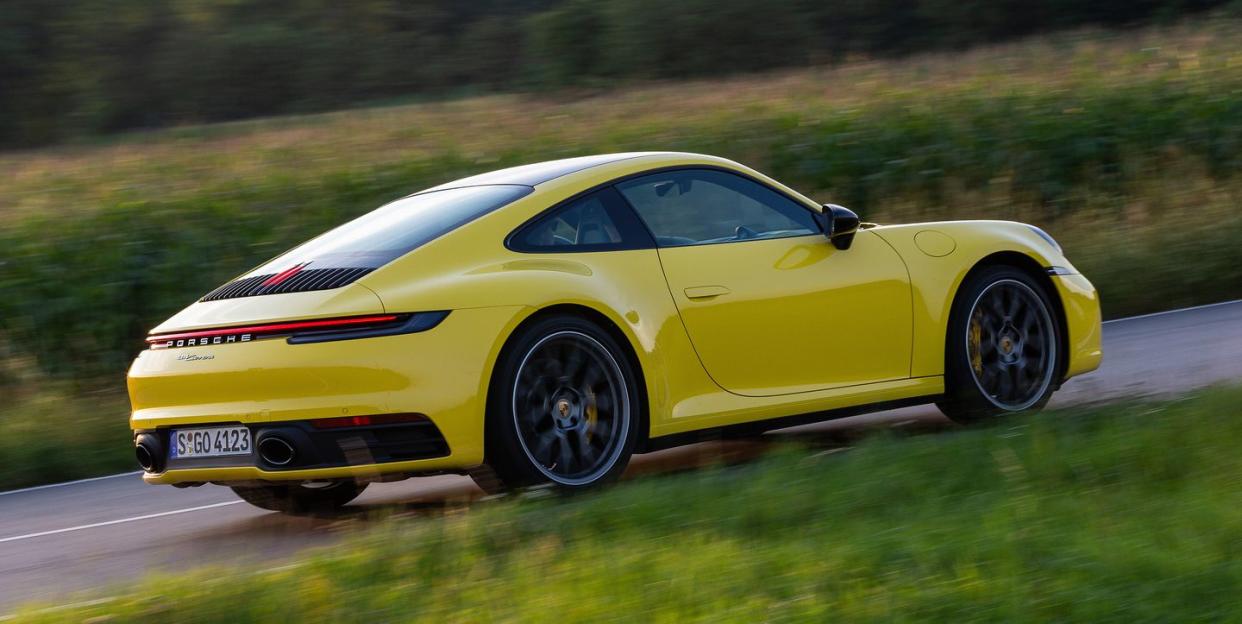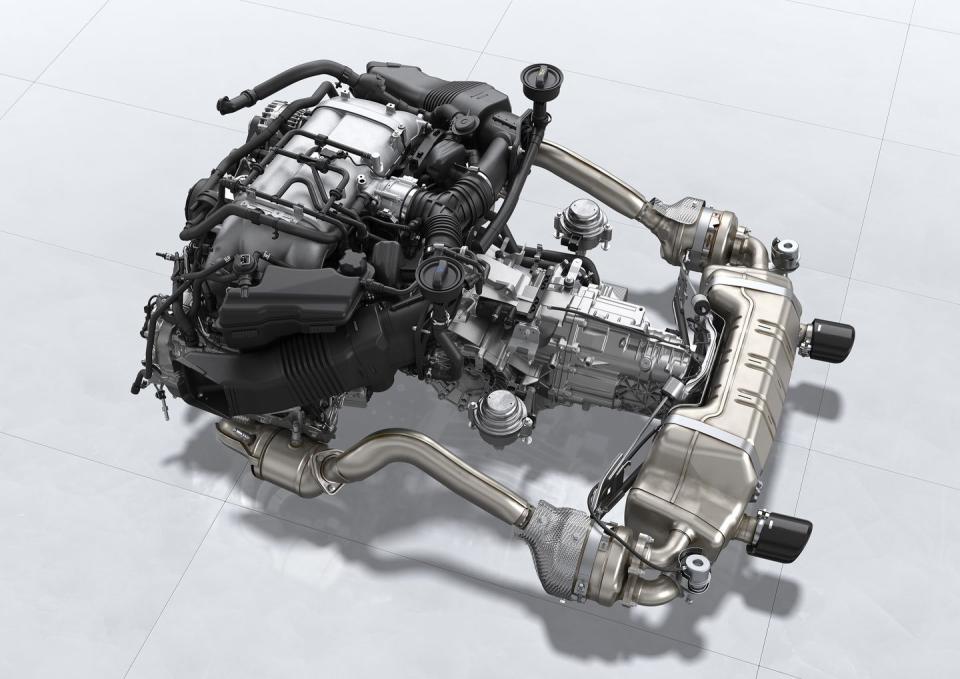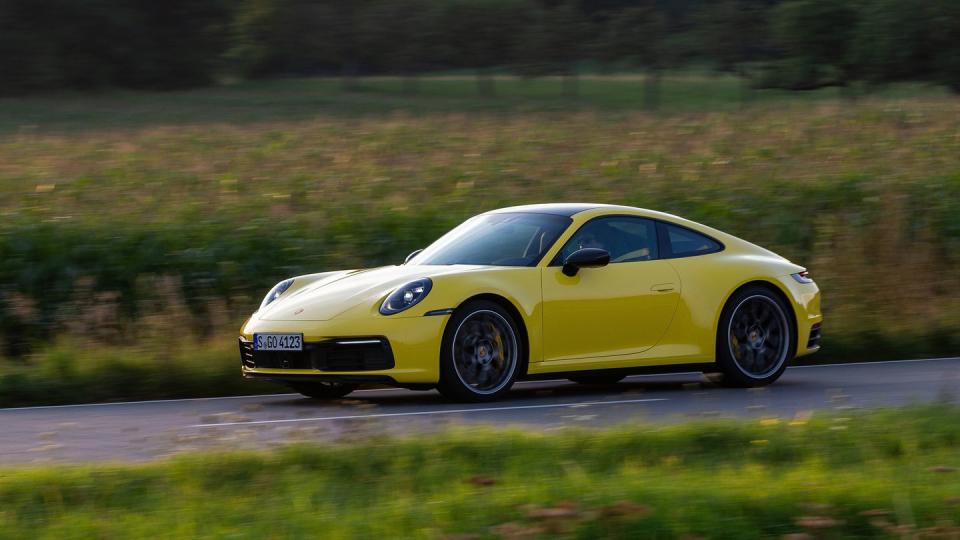The Porsche 911 Won't Get the Cayman GT4's Naturally Aspirated Flat-Six

The Porsche 718 Cayman GT4 and Spyder debuted earlier this year with a new engine—a 4.0-liter naturally aspirated flat-six based loosely on the 3.0-liter twin-turbo in the new 911 Carrera. This engine is cheaper to build than the 911 GT3's exotic 4.0-liter, and designed specifically for mid-engine cars. And it's going to stay that way.
Last week at the Frankfurt Motor Show, Dr. Frank Walliser, the new chief engineer of the 718 and 911 told us that "[f]or sure with engineering effort you could do. But it's a lot of changes...the throttle is in the wrong direction, the water connection is in the wrong direction."
It doesn't make sense to go through the effort for an engine that offers lower power and torque outputs than the 3.0-liter twin-turbo in the Carrera S, even if the 4.0's naturally aspirated configuration brings intrinsic benefits. If you're looking for a naturally aspirated 992, you'll have to wait for the next GT3, which will use the 4.0-liter from the Speedster.

Walliser wouldn't confirm it, but he hinted to R&T that the GT4's 4.0-liter would find its way into more future 718 models. "The response [to this engine] was really good, so for sure we start thinking on what could be next," he said. The current 982-generation Cayman and Boxster are likely sticking around until 2023, so there'll be need to freshen them in the meantime.
"It's interesting how the market develops...We see a little bit of split," he said. The base 2.0-liter model is quite popular thanks to high demand in China—the 718's number one market, Walliser noted—but people also want the higher-end cars, your GT4s and Spyders. "People like the extremes," he said.
Walliser predicted that S and GTS volumes will decrease as a result of bifurcating customer tastes, but they won't go away. "They are important, because we need the steps to go up...From four cylinder to a four liter, that's a little bit too big."
You might know Dr. Walliser best from his roles as chief engineer for the 918 Spyder or as head of Porsche Motorsport. He inherited the job of heading up the 718 and 911 models earlier this year from longtime chief August Achleitner, who retired in April.
We asked what his goals with the 911 were. He said wants to maintain the 911's character in the face of "changing conditions on homologation, tail pipe emissions, CO2 reduction, and so on...Normally, for sure, we want to make the next step. These days, it's really keeping the character. Keeping the car at what we expect."
"The 911 is, for me, a lot about driver involvement," he continued. "So, the owner is always behind the steering wheel. If I could blindly test a car—well, that's not possible—I would say you can really feel it in the steering. The steering of the 911 is not comparable to anything else in the world.
"How the car reacts, how you feel it, steering angle, all these things. How you sit in the car, how you look over the fenders, this gives you all this 911 feeling. All of the space you have in the car—the cabin is relatively roomy. It gives you a very special feeling in the car.
"And involvement is for me very important. You can feel it, it's a sports car. And then you have things like overall power, throttle response, braking, ride quality."

The main challenges with maintaining this character are keeping emissions and fuel usage in check, as well as weight. "I can't really promise to keep the weight, but not to increase it more than really necessary," he said.
Keeping weight down means that there's no hybrid version of the 911 in the pipeline, despite the fact that the 992 was designed to accommodate an electric motor within its dual-clutch gearbox. Echoing what his predecessor told R&T last year, a hybrid 911 would be a heavy car with little to no performance gains given today's technology. There's also no great place to put a battery pack in a 992. You'd either have to sacrifice the front trunk or the rear seats, but putting batteries in either spot would negatively affect weight distribution and reduce practicality.
"I'm not looking for hybrid stickers; I'm looking for the benefits of a hybrid," Walliser said. "I'm thinking more 918. If we invest—because, again, you have a little bit of weight—it must really be better. You have to jump in the car, drive a couple of miles and say, 'That's cool.'
"That's my intention. Get the smile on the face of the customer."
To that end, we'll see a manual 992 soon. And many more good thing to come, it seems.
You Might Also Like

